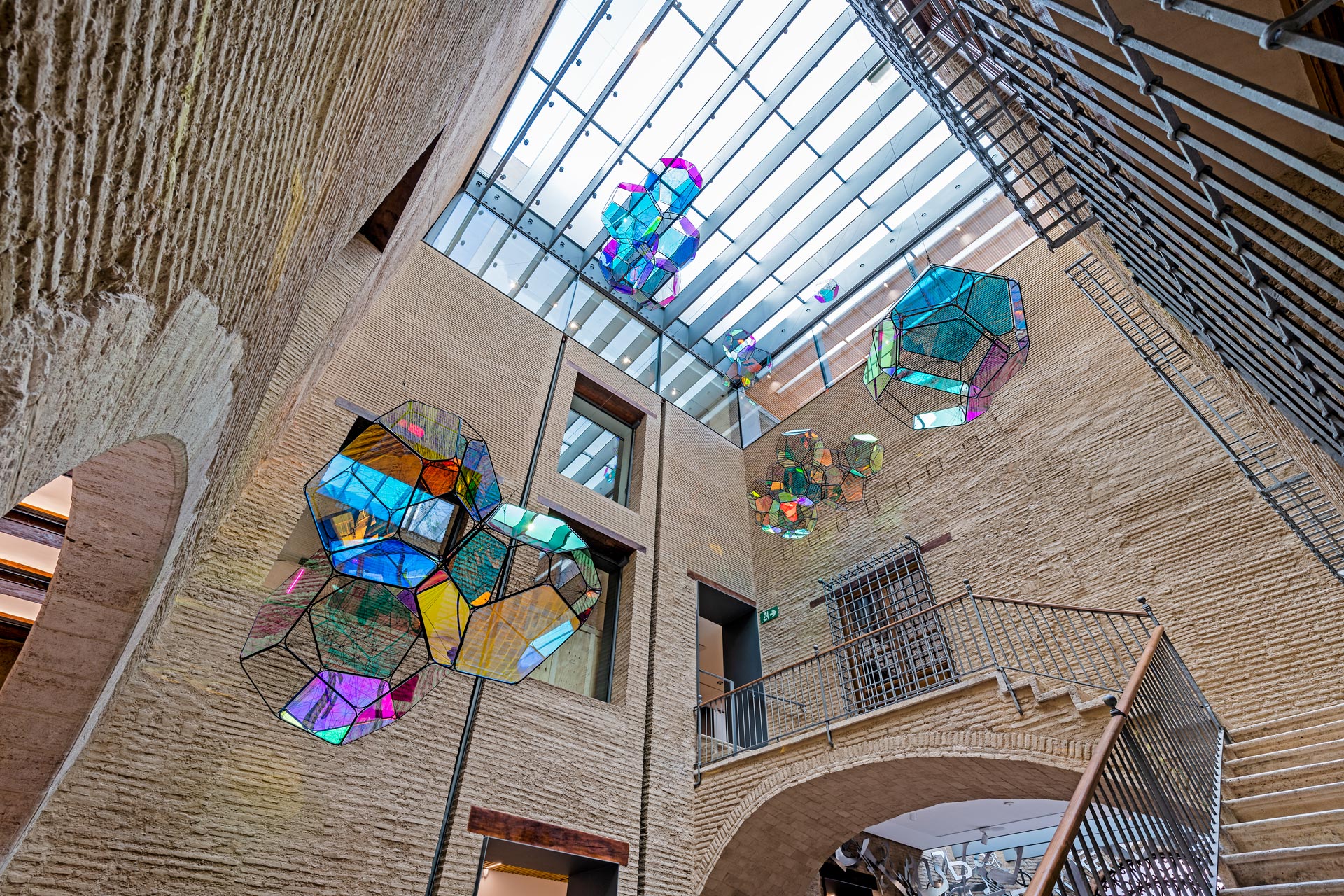Tomás Saraceno is an Argentine-born, Berlin-based artist whose work revolves around the environment and its relationship with human beings. As the artist himself explains: “I don’t know if art can change the world, but I know that its perception can be a part of the project of safeguarding our planet. Art can become something else, form new alliances, new forms of interactions that may disrupt the system, urge a change.”1
After studying architecture and art in Buenos Aires, Frankfurt and Venice, Saraceno set up his studio in Frankfurt in 2005 and then moved it in 2012 to Berlin, where he occupies the former AGFA photographic paper factory. For more than two decades, he has explored the possibility of a future aerial existence as part of his ongoing Air-Port-City/Cloud City project, a utopia of flying metropolises made up of habitable, cell-like platforms that migrate and recombine as freely as the clouds themselves. These projects have given rise to the international, interdisciplinary artistic community known as Aerocene, which seeks to create an environment free of borders and of fossil fuels. As a member of this community, Saraceno set the world record in 2015 for the first and longest fully solar-powered manned flight.
His profound interest in spiders and their webs led him to create a whole department in his studio devoted to researching these animals and working with spiders’ webs as material for his art. As he explains: “I started to see the web as a molecule, then became interested in the work that goes into making it, and eventually expanded it further, as a study of galaxies, of cosmic dust, of intercommunication.” Part of this work was shown in an exhibition held at the Palais Tokyo in Paris in 2018.
Saraceno has collaborated with such prestigious institutions as the Massachusetts Institute of Technology, the Max Planck Institute, Nanyang Technological University, Imperial College London and the Natural History Museum in London.
The Hortensia Herrero collection holds several works by Saraceno, notably including an installation created specifically for the entrance hall of its Art Centre and composed of six elements distributed at different heights. This work, commissioned by Hortensia Herrero in 2018, was the first permanent installation created expressly for the museum, followed later by several more from other artists. In it, Saraceno displays his well-known coloured “clouds”, halfway between the clouds that inhabit our skies and the spiders’ webs deployed in nature. They are works of great poetic beauty that also contain a message of respect for the environment that permeates all his work.
